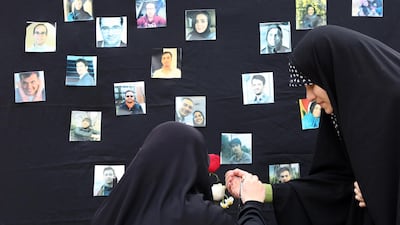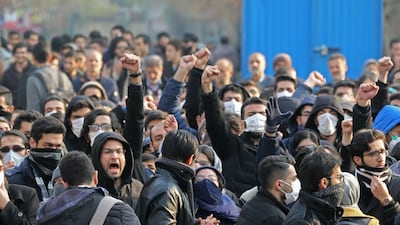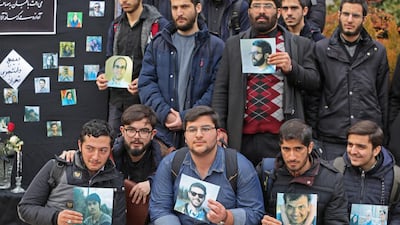Iran said two missiles were fired at a Ukrainian airliner brought down this month, in a catastrophic error that killed all 176 people on board and sparked angry protests.
The country's civil aviation authority said it had yet to receive a positive response after requesting technical assistance from France and the United States to decode the plane's black boxes.
The Kiev-bound Ukraine International Airlines plane was shot down shortly after take-off from Tehran's Imam Khomeini International Airport on January 8.
Iran has come under mounting international pressure to carry out a full and transparent investigation into the air disaster.
"Investigators ... discovered that two Tor-M1 missiles ... were fired at the aircraft," Iran's Civil Aviation Organisation said in a preliminary report posted on its website late Monday.
The statement confirms a report in The New York Times that included video footage appearing to show two projectiles being fired at the airliner.
The Tor-M1 is a short-range surface-to-air missile developed by the former Soviet Union that is designed to attack aircraft or cruise missiles.
For days, Iran denied Western claims based on US intelligence reports that the Boeing 737 operating Flight PS752 had been shot down.
It came clean on January 11, with the Islamic Revolutionary Guard Corps aerospace commander Brig Gen Amirali Hajizadeh accepting full responsibility.
But he said the missile operator had been acting independently.
The deadly blunder triggered days of student-led protests, mainly in the Iranian capital.
Supreme leader Ayatollah Ali Khamenei said on Friday that the demonstrations were unrepresentative of the Iranian people and accused the country's enemies of exploiting the air disaster for propaganda purposes.











In its report, the Civil Aviation Organisation said it was "impossible" for it to read the flight data and cockpit voice recorders – commonly known as black boxes – because they are so advanced.
But it suggests Iran wants to keep them for the time being.
"If devices are provided, the information [on the black boxes] can be restored and retrieved in a short period of time," it said.
The Civil Aviation Organisation said it had asked its French and US counterparts, the BEA and NTSB, to provide a list of the equipment required to read the black boxes.
It said it had also sought the transfer of the required equipment, but that neither the BEA nor NTSB had "so far responded positively" to such a transfer.
After air disasters, black boxes are usually sent to one of a handful of labs around the world that can decode and analyse the data that they contain.
Iran’s Civil Aviation Organisation said it had acquired the list of equipment nonetheless, without saying how, and hinted that it would use it to buy the equipment itself.









